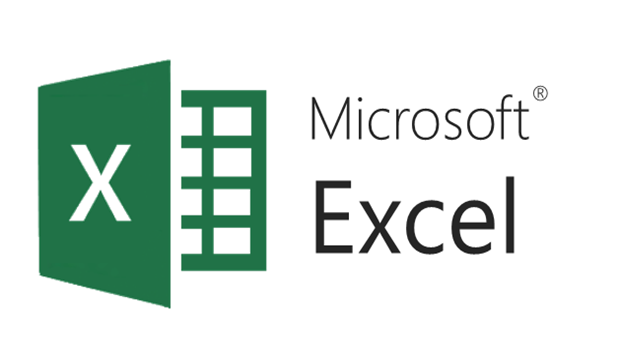Microsoft Office Excel 2021 – Part 3
Duration: 1 day (8hours)
Level: Experienced
Clearly, you use Excel a lot in your role. Otherwise, you wouldn’t be taking this course. By now, you’re already familiar with Microsoft® Office
Excel® 2021, its functions and formulas, a lot of its features and functionality, and its powerful data analysis tools. You are likely called upon to
analyze and report on data frequently, work in collaboration with others to deliver actionable organizational intelligence, and keep and
maintain workbooks for all manner of purposes. At this level of use and collaboration, you have also likely encountered your fair share of issues
and challenges. You’re too busy, though, to waste time scouring over workbooks to resolve issues or to perform repetitive, monotonous tasks.
You need to know how to get Excel to do more for you so you can focus on what’s really important: staying ahead of the competition. That’s
exactly what this course aims to help you do. This course builds upon the foundational and intermediate knowledge presented in the Microsoft
Office Excel 2021: Part 1 and Microsoft Office Excel 2021: Part 2 courses to help you get the most of your Excel experience. The ability to
collaborate with colleagues, automate complex or repetitive tasks, and use conditional logic and dynamic arrays to construct and apply
elaborate formulas and functions will put the full power of Excel right at your fingertips. The more you learn about how to get Excel to do the
hard work for you, the more you’ll be able to focus on getting the answers you need from the vast amounts of data your organization
generates. This course covers Microsoft Office Specialist Program exam objectives to help you prepare for the Excel Associate (Office 365 and
Office 2021): Exam MO-200 and Excel Expert (Office 365 and Office 2021): Exam MO-201 certifications. This course may earn a Credly
Badge.
Learning Objectives
Upon successful completion of this course, you will be able to perform advanced data analysis, collaborate on workbooks with other users, and
automate workbook functionality.
You will:
Work with multiple worksheets and workbooks.
Share and protect workbooks.
Automate workbook functionality.
Use Lookup functions, dynamic arrays, and formula auditing.
Forecast data.
Create sparklines and map data.
Audience
This course is intended for students who are experienced Excel 2021 users and have a desire or need to advance their skills in working with
some of the more advanced Excel features. Students will likely need to troubleshoot large, complex workbooks, automate repetitive tasks,
engage in collaborative partnerships involving workbook data, construct complex Excel functions, and use those functions to perform rigorous
analysis of extensive, complex datasets.
Prerequisites
To ensure success, students should have practical, real-world experience creating and analyzing datasets using Excel 2021. Specific tasks
students should be able to perform include: creating formulas and using Excel functions; creating, sorting, and filtering datasets and tables;
presenting data by using basic charts; creating and working with PivotTables, slicers, and PivotCharts; and customizing the Excel environment.
To meet these prerequisites, students can take the following Logical Operations courses, or should possess the equivalent skill level: Microsoft
Office Excel 2021: Part 1 Microsoft Office Excel 2021: Part2
What’s included?
- Authorized Courseware
- Intensive Hands on Skills Development with an Experienced Subject Matter Expert
- Hands on practice on real Servers and extended lab support 1.800.482.3172
- Examination Vouchers & Onsite Certification Testing- (excluding Adobe and PMP Boot Camps)
- Academy Code of Honor: Test Pass Guarantee
- Optional: Package for Hotel Accommodations, Lunch and Transportation
With several convenient training delivery methods offered, The Academy makes getting the training you need easy. Whether you prefer to learn in a classroom or an online live learning virtual environment, training videos hosted online, and private group classes hosted at your site. We offer expert instruction to individuals, government agencies, non-profits, and corporations. Our live classes, on-sites, and online training videos all feature certified instructors who teach a detailed curriculum and share their expertise and insights with trainees. No matter how you prefer to receive the training, you can count on The Academy for an engaging and effective learning experience.
Methods
- Instructor Led (the best training format we offer)
- Live Online Classroom – Online Instructor Led
- Self-Paced Video
Speak to an Admissions Representative for complete details
| Start | Finish | Public Price | Public Enroll | Private Price | Private Enroll |
|---|---|---|---|---|---|
| 5/12/2025 | 5/12/2025 | ||||
| 6/2/2025 | 6/2/2025 | ||||
| 6/23/2025 | 6/23/2025 | ||||
| 7/14/2025 | 7/14/2025 | ||||
| 8/4/2025 | 8/4/2025 | ||||
| 8/25/2025 | 8/25/2025 | ||||
| 9/15/2025 | 9/15/2025 | ||||
| 10/6/2025 | 10/6/2025 | ||||
| 10/27/2025 | 10/27/2025 | ||||
| 11/17/2025 | 11/17/2025 | ||||
| 12/8/2025 | 12/8/2025 | ||||
| 12/29/2025 | 12/29/2025 | ||||
| 1/19/2026 | 1/19/2026 |
Outline
1. Working with Multiple Worksheets and Workbooks
Topic A- Use Links and External References
Topic B- Use 3-D References
Topic C- Consolidate Data
2. Sharing and Protecting Workbooks
Topic A- Collaborate on a Workbook
Topic B- Protect Worksheets and Workbooks
3. Automating Workbook Functionality
Topic A- Apply Data Validation
Topic B- Search for Invalid Data and Formulas with Errors
Topic C- Work with Macros
4. Using Lookup Functions, Dynamic Arrays, and Formula Auditing
Topic A- Use Lookup Functions
Topic B- Use Dynamic Arrays and Dynamic Array Functions
Topic C- Trace Cells
Topic D- Watch and Evaluate Formulas
5. Forecasting Data
Topic A- Determine Potential Outcomes Using Data Tables
Topic B- Determine Potential Outcomes Using Scenarios
Topic C- Use the Goal Seek Feature
Topic D- Forecast Data Trends
6. Creating Sparklines and Mapping Data
Topic A- Create Sparklines
Topic B- Map Data


